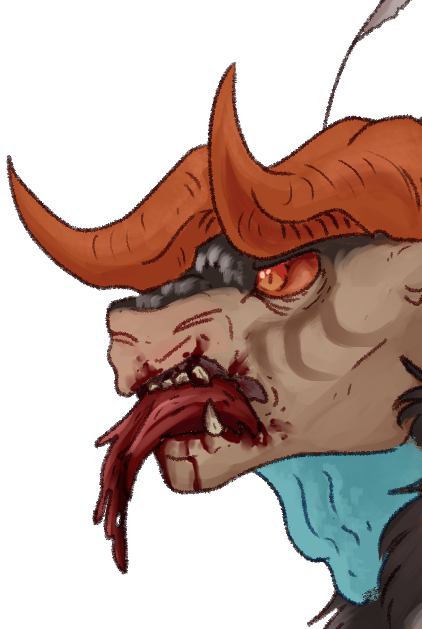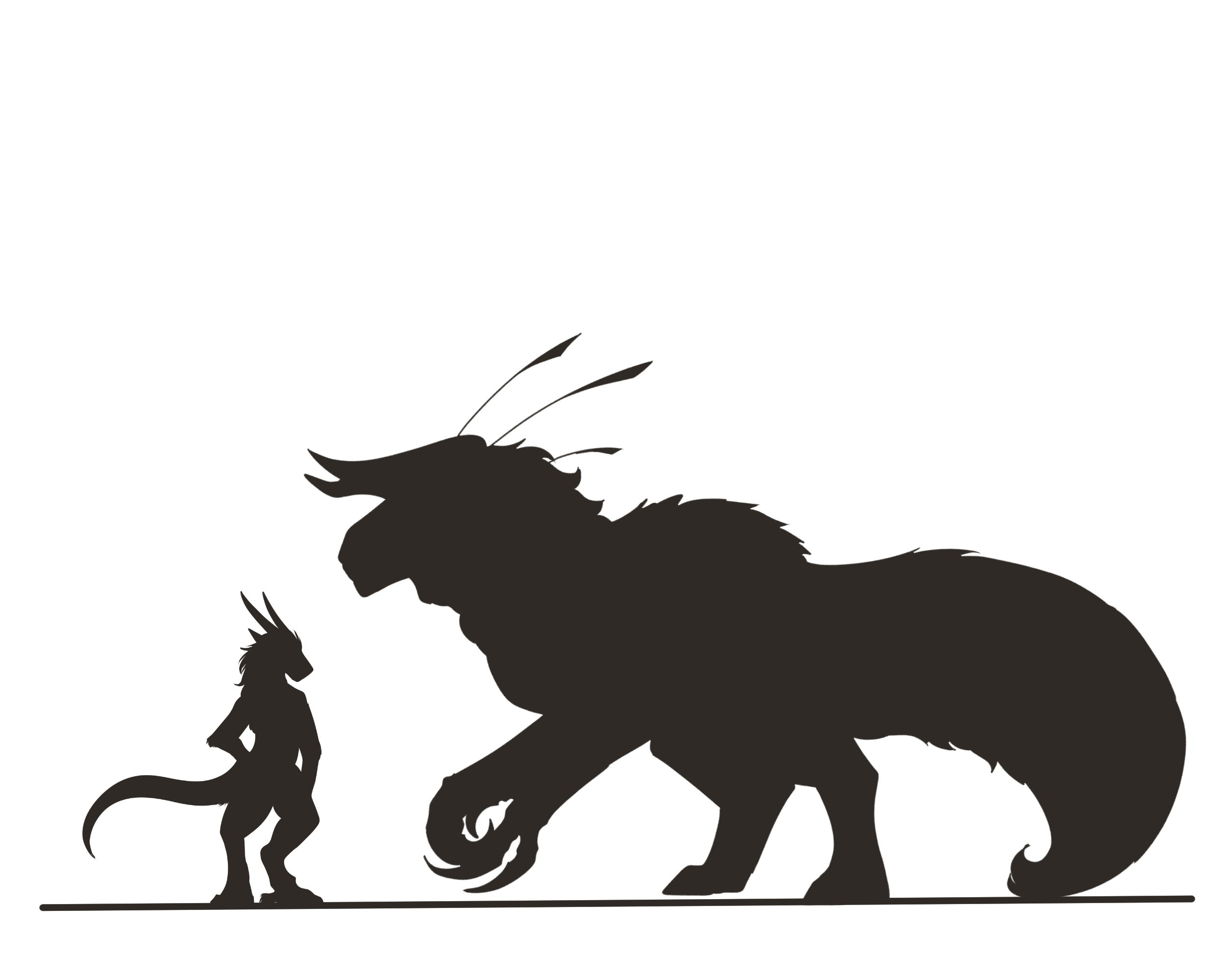
ID: F.CA.2.003
Name: Arogratar
Sub Order: Spring to jump and teeth to scar, Maul
and scorn with dagger long claws.
Class: Pretaria
Sub Class: Terrasànpa
Order: Carnfor
Group: Terra
Sub Group: Springloaded Claws
Height: 15-24ft
Weight: 6,000-10,000lbs
Length: 30-40ft
Related Species:
Calls:
Range
Arogratar historically and still due inhabit the Norüʐgà Saltʐ Fields. The fields and their lush desert grasses and high arching trees with sprawling leaves are their home. Clusters of bolders and rocks lay littered about the ground. Many other beasts call these fields home

Arogratar
Overview
The Arogratar is a large predator native to the Norüʐgà Saltʐ Field. These beasts are solidary, prefering to ambush prey alone. Though they are not outwardly aggressive to each other; they certainly are not friendly. These beasts prefer a semi-nomadic life and are ambush predators. With their long legs one would spring out of a bush, and with their claws and the springloaded force. Pierce or catch a tight hold of anything to then maul. Their flat cow-ish nose acts like a guard to spines and spikes, with its fatty deposits taking the brunt of the blows. The bright blue dewlap is used in courting rituals. Its horns are used for nest making, scoring the ground and pushing rocks. The long feathers that protrude from the backs of their necks are wyrm sensors. Capable of picking up any wyrm currents and alerting the Arogratar an underground threat approaches. An adaptation devised to protect mainly their young from wyrms such as Lesser Drillhörns, Goldenglàshes, and Kériüstills. Though, Goldenglàshe will still prey upon adult Arogratar if the opportunity reveals itself.
Temperment
Arogratar can be kept if it is by the right individual. The beasts have short fuses and are very quick to anger. But do give things the grace a few warnings. This can be either displayed as snorting, barking, clawing at the ground, or razing the ground with their horns. Though, if tamed, an Arogratar can become an exceedingly loyal companion through ones life. Historically, Arogratar have been used as siege mounts. Their high durability and thick manes amongst custom made armor would make of them a terrifying mount.
Life Cycle
Arogratar do not mate for life. One will carry the spawn, while the other
leaves to continue its childfree life. The parent, would dig a den.
Uprooting rocks, roots, and other debris from the ground to construct a
roof over a dip in the ground. Sealing it with mud and the like. Covering
and uncovering the exit at will to protect the young while it hunts. The
young of an Arogratar are a dark brown to black color. And typically ten
to twenty seven are had in a litter. Instinctually they will huddle up
around the corners of the den, shrouded in darkness. When feeding, the
parent will regurgitate a bile that the young will feed from for their
first five years. Before the parent can bring back scraps of solid food.
At a landstone age of six, the remaining spawn, typically eight to ten.
Will embark on a trip to sulfur laden hot springs. The trip is dangerous,
often only two or three return from it. This migration is made to replenish
the youngs mineral content and allow them to strengthen claws and teeth with
various metals at the springs. From there, they will stick around the parent
for a month or two more before dispersing into the wild. And often only one
lives in the end.
Arogratar commonly find themselves experiencing
”Accidental Intelligence”. As the native range of Arogratar,
Norüʐgà Saltʐ Field, is one of the few safer paths through the desert.
From or too the city Vicralus and out past the Singing Sands
and into the rest of the desert. So, dragomii are a common prey item.


